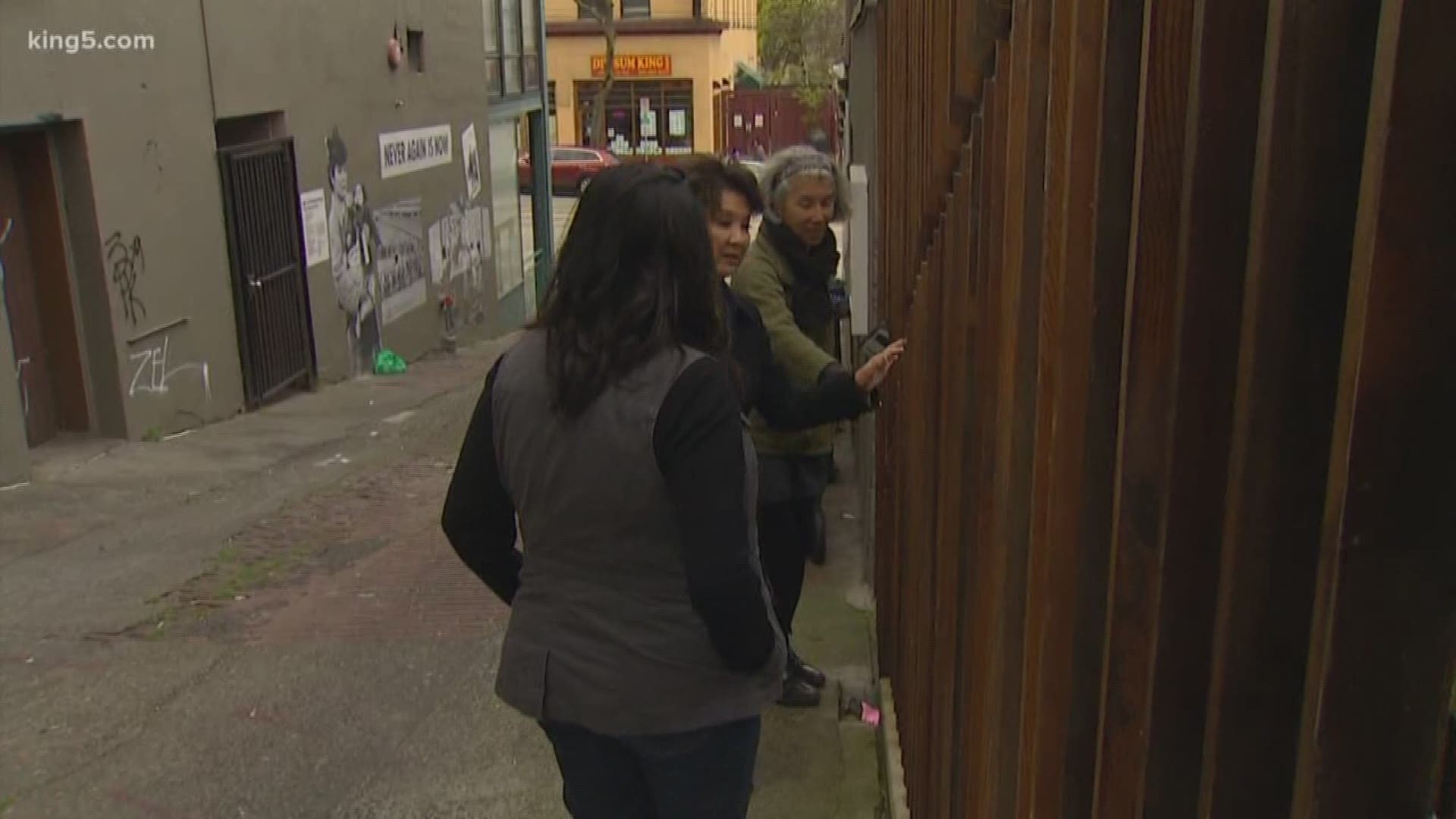Nihonmachi translates to Japantown
The Nihonmachi Alley serves as an example of a subtle updo to a typically unattractive public space. "There's a desire to have the alleys just being good functioning places in the neighborhood," said Maiko Winkler-Chin, Seattle Chinatown International District Preservation and Development Authority Executive Director.
Families used the alleys as play spaces
Many Japantown business owners used the alleys as a place to hang out with their families. "Storefronts were actually live-work spaces before live-work spaces were actually a term," said Winkler-Chin. "So that used to be where people used to play. People didn't play on the streets; they played in the alleys."
The fence represents the resilience of the community from the beginning of Japanese migration to the current day. The Japanese internment during World War II is most notable as you can see the population fall. The lead artist and designers were Rumi Koshino and Yuko Kundig, and they subtly displayed the population for each decade.
The garden is a tribute to Chiyo Murakami. The Murakami family owned the Higo Variety store, which sold essentials to a thriving Japantown. Chiyo Murakami was the oldest daughter in the family and died from tuberculosis in the late 1930s when she was just 22. The plot of land used for Chiyo's Garden would have been the land Chiyo stared down on from her window. The garden is a restoration project by the Wing Luke Museum, the Murakami family and KOBO at Higo.
If you take a stroll, you might want to look at the mural honoring the Day of Remembrance. It's a reminder of a time when Japanese Americans were sent to internment camps. One famous photo depicts a mother a child wearing tags on their clothing, indicating the time and location of where they were supposed to meet before being sent to an internment camp.
Learn something, feel something, do something. Watch Take 5 at 4 p.m. weekdays on KING 5 or streaming live on KING5.com. Connect with the Take 5 team in the 5 Hive, on Instagram and Twitter.

